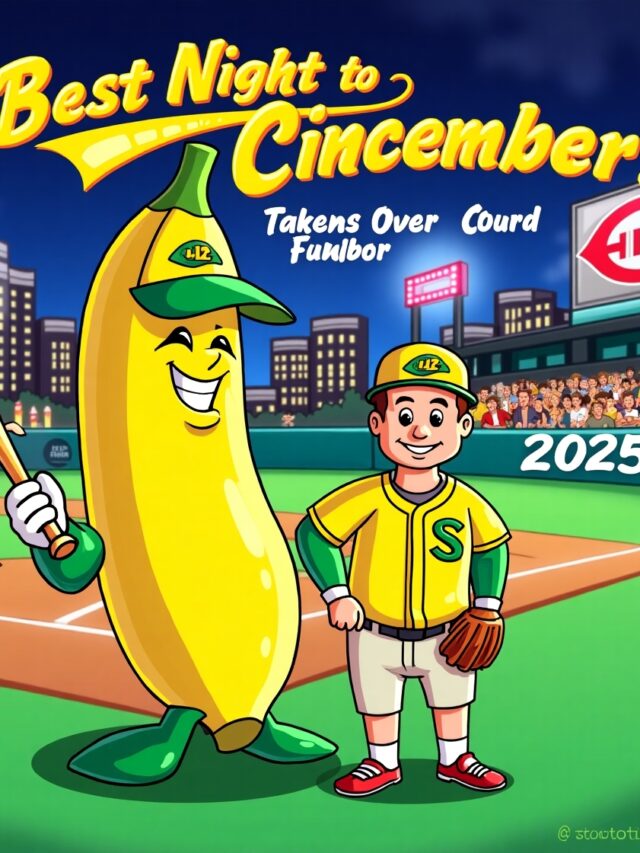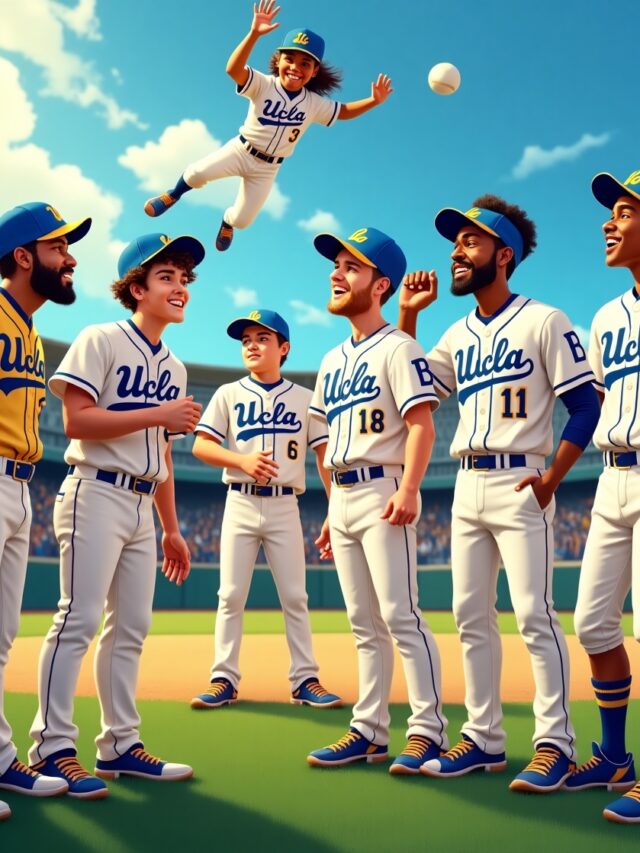Phillies Fan Takes Ball from Kidnappers: A First-Hand Report
The afternoon air in South Philadelphia carried the familiar, electric buzz of game day. The scent of grilled onions and sausages mixed with the low hum of thousands of conversations, a symphony I’ve come to associate with home games at Citizens Bank Park. My name is Mohit, and as a journalist covering the city beat, I’ve seen my share of strange things on these streets. But nothing, absolutely nothing, could have prepared me for what was about to unfold on this otherwise perfect day for baseball.
I was finishing a hot dog, mentally drafting a human-interest piece about the die-hard fans who arrive hours before the first pitch. The sun was warm, the mood was light. Kids in oversized jerseys tossed baseballs, their parents watching with easy smiles. It was the picture of American pastime joy. Then, a scream shattered the peace.
It wasn’t a playful shriek or a cheer. It was sharp, jagged, and full of pure terror. Heads turned in unison. My journalistic instincts kicked in instantly. I dropped my half-eaten lunch and ran towards the sound, my heart pounding against my ribs. The scream had come from a side street just off Pattison Avenue, a quieter stretch often used for parking. What I saw there will be seared into my memory forever.
A young boy, no older than ten, was being pulled towards a nondescript black van by two men. His face was a mask of panic, tears streaming down his cheeks. His mother was on the ground, struggling to get up, her own cries for help choked by fear. The scene was surreal, a nightmare playing out in broad daylight. People froze, a wave of shock and disbelief washing over the small crowd that was beginning to form. It was happening too fast. The men were rough, determined. One had the boy by the arm, the other was trying to open the van’s sliding door.

The Unlikeliest of Heroes
In a city known for its passionate, sometimes aggressive, sports fans, you expect a certain kind of reaction to public disruption. Shouting, maybe a thrown object or two. What you don’t expect is a calculated act of heroism that feels like it’s straight out of a Hollywood script. But this is Philadelphia. We do things differently here.
Just as one of the abductors finally wrenched the van door open, a man emerged from the crowd. He wasn’t a cop. He wasn’t a security guard. He was a Phillies fan, through and through. He wore a faded red pinstripe jersey—number 26, Chase Utley, a true Philly legend. On his head was a well-worn Phillies cap, and in his right hand, he clutched a baseball glove.
He didn’t shout. He didn’t charge. He just started walking towards the van with a calm, unnerving purpose. I remember thinking, “What is this guy doing? He’s going to get himself killed.” The men holding the boy saw him approaching. “Get back!” one of them yelled, his voice laced with a nervous edge. “This ain’t your business!”
The fan, who I later learned was named Frank Miller, a plumber from Delco, didn’t even flinch. He just kept walking, his eyes locked on the terrified child. He was about twenty feet away when it happened. In the chaos, the boy had dropped a baseball he was holding, a souvenir he’d probably been hoping to get signed. It rolled a few feet away from the van, coming to a stop near a storm drain.
Frank stopped. He pointed at the ball with his gloved hand. “Hey,” he said, his voice steady and clear, cutting through the tension. “That’s a foul ball. Kid’s gotta get that.”
The two kidnappers exchanged a confused look. It was the most bizarre thing I’d ever heard. Here they were, in the middle of a violent abduction, and this man was talking about baseball rules. The absurdity of the moment was a weapon in itself. It momentarily broke their focus.
“What are you talking about?” the man holding the boy snarled. “Get out of here!”
Frank took another step forward. “I said, that’s the kid’s ball,” he repeated, his tone hardening. “And in Philly, we don’t let anyone take a ball from a kid. Ever.”
A Play for the Ages
What happened next was a blur of motion and raw courage. As the two men were distracted by Frank’s bizarre declaration, a woman from the crowd—the boy’s aunt, I would discover—made a desperate lunge. She didn’t go for the men. She went for the van door, slamming it shut with all her might. The sound echoed like a gunshot.
The noise startled the kidnapper holding the boy, and for a split second, his grip loosened. That was the only opening the child needed. He twisted violently, broke free, and scrambled towards his mother, who was now back on her feet.
The situation escalated instantly. The two men, their plan foiled, turned their rage on Frank. One lunged at him, but he was ready. He wasn’t a brawler; he was a fan. He did what any fan would do—he got into a ready stance, glove open. As the first man threw a wild punch, Frank ducked under it with surprising agility. He wasn’t trying to fight them. He was trying to buy time.
By now, the scene had attracted more people. The initial shock had worn off, replaced by a surge of communal anger. Cries of “Let’s get ’em!” and “You don’t do that here!” erupted from the growing crowd. The sound of sirens grew louder in the distance. The kidnappers were trapped, and they knew it.
Their faces contorted with panic. They abandoned the fight with Frank and made a break for it, sprinting down the street away from the ballpark. A few fans gave chase, but most of the attention was now focused on the boy, who was sobbing in his mother’s arms.
Frank didn’t join the chase. He walked calmly over to where the souvenir baseball lay on the pavement. He knelt, picked it up with his bare hand, and wiped the grime off on his jeans. He then walked over to the boy, who was still trembling.
He crouched down to the child’s eye level. “Hey, slugger,” he said softly, holding out the baseball. “I think this is yours. Don’t ever let anyone take it from you.”
The boy looked up, his tear-streaked face a mixture of fear and awe. He took the ball, his small fingers wrapping around it tightly. In that moment, the baseball wasn’t just a souvenir. It was a symbol of his rescue, a tangible piece of the bravery he had just witnessed. Frank gave the boy’s shoulder a gentle squeeze, tipped his cap to the mother, and then, almost unbelievably, began to melt back into the crowd. He wasn’t looking for praise or attention. For him, it was just the right thing to do.

The Aftermath and a City’s Pride
When the police arrived, the scene was a chaotic mix of relief and adrenaline. I gave my statement, along with a dozen other witnesses. The mother, Maria Lopez, and her son, Leo, were checked over by paramedics. They were shaken but physically unharmed. Maria couldn’t stop thanking everyone, her voice cracking with emotion. “He saved my son,” she kept saying, pointing in the direction Frank had disappeared. “That man… that Phillies fan… he saved my baby.”
The story spread through the ballpark and the city like wildfire. By the third inning, phones were lighting up with news alerts and social media posts. The phrase “Phillies fan takes ball from kidnappers” was trending. It was a modern-day urban legend being born in real time. Everyone was asking the same question: Who was this guy?
It took a couple of days, but Frank Miller was eventually identified, much to his reluctance. He gave a short, humble interview to a local news station from his front porch. “I’m no hero,” he insisted, looking uncomfortable in the spotlight. “I just saw a kid in trouble. In this city, we look out for each other. That’s just how it is. And you don’t mess with a kid at a Phillies game. It’s an unwritten rule.”
His words resonated deeply with Philadelphians. It spoke to the city’s identity—a tough, blue-collar town with a fiercely protective spirit. We might boo our own players when they mess up, but we will defend our own, especially the most vulnerable, with everything we have. Frank Miller’s actions weren’t just about stopping a crime; they were an embodiment of the Philly ethos.
The incident sparked a city-wide conversation.
- Community Policing: People discussed the importance of citizen intervention and looking out for your neighbors.
- Sports Fandom: The event highlighted how sports can create a powerful sense of community and shared identity that transcends the game itself.
- Urban Courage: It became a story about everyday courage, proving that heroes don’t always wear capes—sometimes they wear faded baseball jerseys.
The Phillies organization honored Frank Miller during a pre-game ceremony the following week. They brought him onto the field with Leo and his family. The entire stadium rose to its feet, a thunderous, twenty-minute standing ovation that seemed to shake the very foundations of the park. When Frank, standing near the pitcher’s mound, tossed that same scuffed-up baseball to Leo in the dugout, there wasn’t a dry eye in the house.
For me, as a journalist, the story of the Phillies fan takes ball from kidnappers was a powerful reminder of why I do this job. It’s not just about reporting on crime statistics or political scandals. It’s about capturing the moments of profound humanity that shine through in the darkest of times. It’s about telling the stories of ordinary people who, when faced with an extraordinary choice, choose to do something brave.
The event became a part of Philadelphia lore. It was a story of how a regular guy, armed with nothing but a baseball glove and a deeply ingrained sense of right and wrong, stared down evil and won. It was a testament to the fact that sometimes, the most effective weapon against chaos isn’t force, but the disarming power of a shared code, a simple rule that everyone understands: you don’t take a ball from a kid. Not in this city. Not ever. And as I walked away from the park that day, I had never been prouder to call Philadelphia my home.










